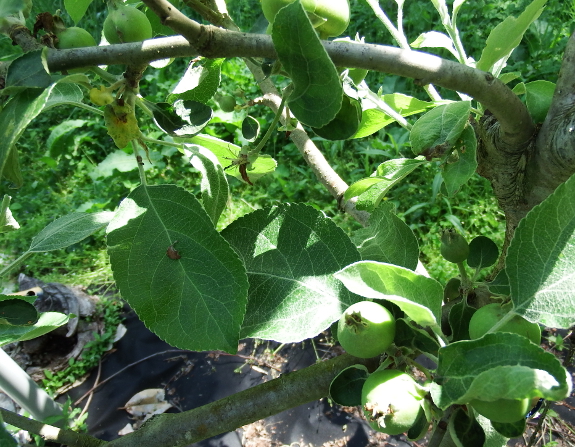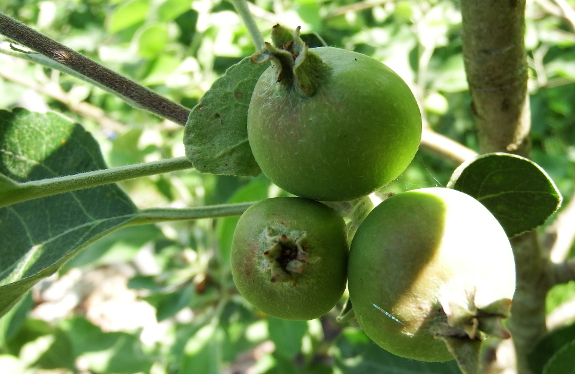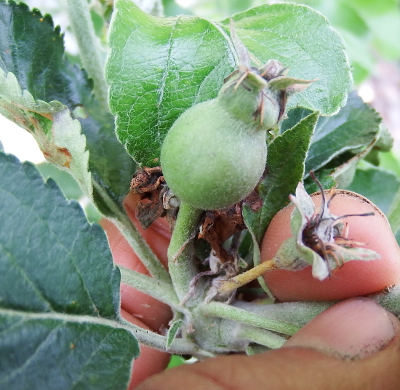
Why and how to thin apples

I really didn't expect to
have to thin, but two of our apple trees (Enterprise and Early
Transparent) set such a substantial crop this spring that they required a
little TLC. And even a few of the other trees have pairs of apples in
excessively close proximity despite a hard April freeze having nipped
90% of their crop. Time to thin!

"Why thin?" some of you
are saying. "Don't you want as many apples as you can get?" There are
all kinds of reasons to thin but they tend to come down to size, flavor,
future yield, and disease/pest resistance. Basically, if you don't
thin a tree that is loaded with potential fruits, it'll make lots of
small apples that are more likely to get sick by trapping moisture
between the fruits. And some apple species tend toward biennial bearing,
skipping a year after fruiting heavily the season before.
 You
can work around all of those issues pretty simply by going in at this
time of year and pinching off excess fruits that set in the same
cluster. Don't be too precipitate about this --- the image on the left
shows a cluster that is self-thinning and you should definitely wait
until the tree has decided which ovaries to abort before removing yet
others. On the other hand, if you wait too late (which one study I read
said was June), the tree will assume it's going to have to ripen all of
those fruits and will decrease it's production of bloom buds for next
year accordingly.
You
can work around all of those issues pretty simply by going in at this
time of year and pinching off excess fruits that set in the same
cluster. Don't be too precipitate about this --- the image on the left
shows a cluster that is self-thinning and you should definitely wait
until the tree has decided which ovaries to abort before removing yet
others. On the other hand, if you wait too late (which one study I read
said was June), the tree will assume it's going to have to ripen all of
those fruits and will decrease it's production of bloom buds for next
year accordingly.
My other caution is to
pinch off the fruits rather than breaking off the whole spur since
apples fruit from the same spot year after year. A lost spur is a lost
apple next year and for many years in the future.
Those caveats aside, thinning is simply a matter of choosing the
best-looking apple --- usually the biggest, but sometimes the least
insect- or frost-damaged --- and removing everything else in that
cluster. Now we just have to wait with baited breath for homegrown
fruit!
Want more in-depth information? Browse through our books.
Or explore more posts by date or by subject.
About us: Anna Hess and Mark Hamilton spent over a decade living self-sufficiently in the mountains of Virginia before moving north to start over from scratch in the foothills of Ohio. They've experimented with permaculture, no-till gardening, trailersteading, home-based microbusinesses and much more, writing about their adventures in both blogs and books.
Want to be notified when new comments are posted on this page? Click on the RSS button after you add a comment to subscribe to the comment feed, or simply check the box beside "email replies to me" while writing your comment.
